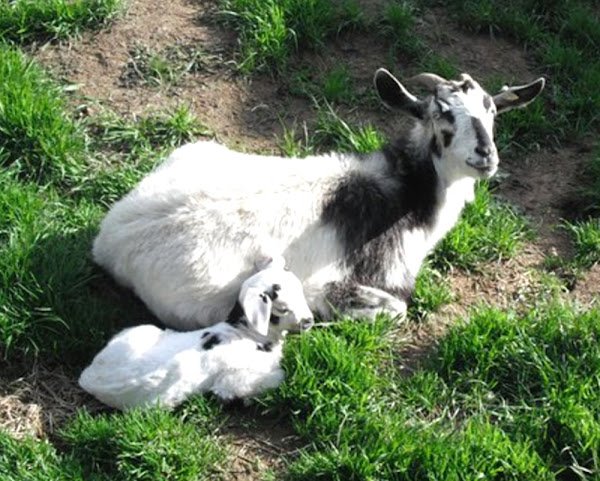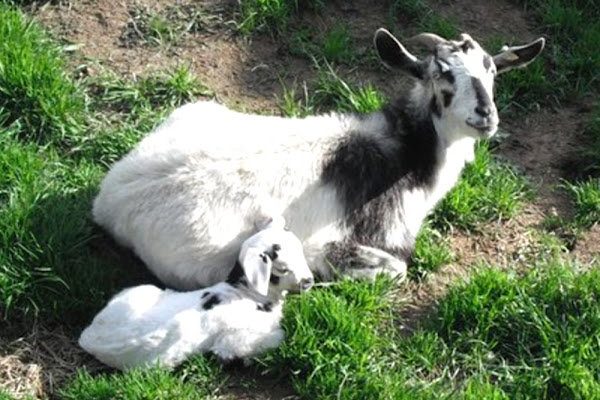
Understanding the Kiko goat is like uncovering a well-kept secret in the farming community. Imagine grabbing a cup of coffee with a goat enthusiast, and they tell you about this breed that’s all about hardiness and efficiency. It’s not just about having goats; it’s about having goats that can withstand challenges while still providing valuable resources. Whether you’re considering raising goats for milk, meat, or just as charming companions, the Kiko has much to offer!
History of the Kiko Goat
The Kiko goat’s journey began in New Zealand during the late 1980s. Farmers were looking for a goat breed that could thrive in the rugged New Zealand landscape. So, they decided to breed various types of goats, including wild goats, to create a resilient breed. The goal was simple: develop a goat that could withstand harsh weather, forage for food, and produce high-quality meat.
Over time, the Kiko goat proved to be more than just a survivor; they thrived. These goats quickly became known for their fast growth rates and ability to adapt to a variety of environments. By the early ’90s, Kiko goats gained recognition beyond New Zealand, making their way to the United States and other countries. Their hardiness and efficient meat production caught the attention of farmers everywhere.
Kiko means “meat” in the Maori language, which perfectly encapsulates their primary purpose. Today, they’re a popular choice for meat production, but their history is a testament to the ingenuity and resourcefulness of farmers. This breed really is a success story rooted in challenging conditions and practical needs.
Physical Traits of Kiko Goats
Kiko goats are easily identifiable by their robust, muscular build. They come in various colors, but you’ll often see them in shades of white, cream, black, and brown. What sets them apart is their strong stature—think of a mini tank on four legs! They typically have long ears and a straight back, contributing to their impressive appearance.
One of the standout features of Kiko goats is their ability to shed their coats. During warmer months, they naturally shed their winter fur, helping them stay cool without needing additional grooming from their owners. This self-sufficiency is a huge plus for anyone looking to raise goats with minimal fuss.
Another common trait is their hardy hooves. Kiko goats are known for their excellent hoof structure, allowing them to navigate rocky or uneven terrain with ease. This adaptability not only helps them graze on diverse landscapes but also reduces the need for regular hoof care, making them an appealing choice for both seasoned and novice goat owners.
Behavioral Traits and Temperament
Kiko goats are often described as friendly, curious, and easy to handle. They have an adventurous spirit, always ready to explore their surroundings. This curious nature can sometimes lead them into tricky situations, so it’s wise to ensure their environment is safe and secure.
Their friendly demeanor makes them great companions, whether you’re raising them for meat or simply as pets. Kiko goats are social animals and thrive in herds. They often enjoy human interaction, often following their owners around like playful puppies. Their affectionate nature can really brighten up your day.
However, here’s the thing: while they are generally easy to handle, Kiko goats can also exhibit stubbornness. They may test boundaries, especially if they feel bored or under-stimulated. It’s important to keep their environment engaging to prevent any mischievous behavior. Consider providing toys or obstacles for them to explore!
Primary Uses of Kiko Goats
Now let’s get to the heart of why Kiko goats are so popular: their primary uses. These goats are primarily raised for their meat, which is lean, flavorful, and gaining popularity in the culinary world. Kiko meat has a reputation for being high-quality, making it desirable for both home cooks and restaurants.
In addition to meat, Kiko goats can also produce milk, although it’s not their primary function. Their milk is typically rich and can be made into cheese or other dairy products. For those interested in diverse farm products, having a few Kiko goats for milk alongside their meat production can be a great option.
Beyond meat and milk, Kiko goats are fantastic for land management. They are natural browsers and can help keep brush and invasive plants in check. This makes them an environmentally friendly option for landowners looking to maintain their property without the use of chemicals or heavy machinery. Plus, their grazing habits contribute to healthier soil and ecosystems.
Benefits of Raising Kiko Goats
There are many advantages to raising Kiko goats, especially if you’re new to livestock. First and foremost, they are incredibly hardy. Their adaptability means they can thrive in various environments, from cold climates to hot, dry areas. This resilience allows farmers in different regions to successfully raise them without major issues.
Another plus is their low maintenance requirements. Kiko goats are known for their robust health and strong immune systems. This results in fewer vet visits and lower care costs compared to other breeds. Their ability to thrive on pasture and forage also means you can save money on feed.
Furthermore, Kiko goats have a strong growth rate, meaning they produce meat more quickly than many other breeds. This is an essential factor for farmers looking to maximize their return on investment. With an efficient growth rate and minimal upkeep, it’s easy to see why they appeal to both commercial and small-scale farmers.
Considerations Before Getting Kiko Goats
Before you rush out to buy your Kiko goats, there are a few things you should consider. First up is space. While Kiko goats are relatively low-maintenance, they still need ample room to roam and browse. Ensure you have a secure, spacious area with plenty of vegetation for them to explore.
Next, think about their social needs. Kiko goats thrive in groups, so it’s best to have at least two. Otherwise, they might feel lonely, which could lead to stress or behavioral issues. Plus, they’re more fun to watch when they’re interacting with their buddies!
Lastly, don’t forget about health care. While Kiko goats are hardy, regular check-ups, vaccinations, and good nutrition are essential for a long, healthy life. Research local veterinarians who are familiar with goats, and make sure you’re prepared to provide the right care.
Kiko goats are a true gem in the livestock world, offering a blend of resilience, usefulness, and charm. Whether you’re interested in meat production, land management, or simply having delightful companions, these goats can fit the bill. Their rich history, distinctive traits, and practical benefits make them a worthwhile addition to any farm or homestead.
If you’re thinking about raising Kiko goats, you’re taking a step toward a rewarding experience. With careful consideration and preparation, you can enjoy all the perks of these incredible animals. So grab that coffee, do your research, and maybe even start planning your goat adventure!

